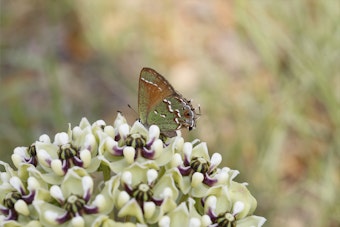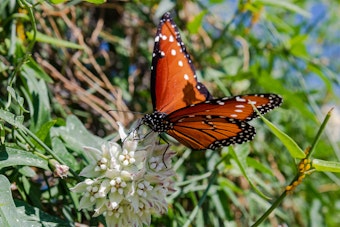 Be Inspired Blog - Arizona
Be Inspired Blog - Arizona
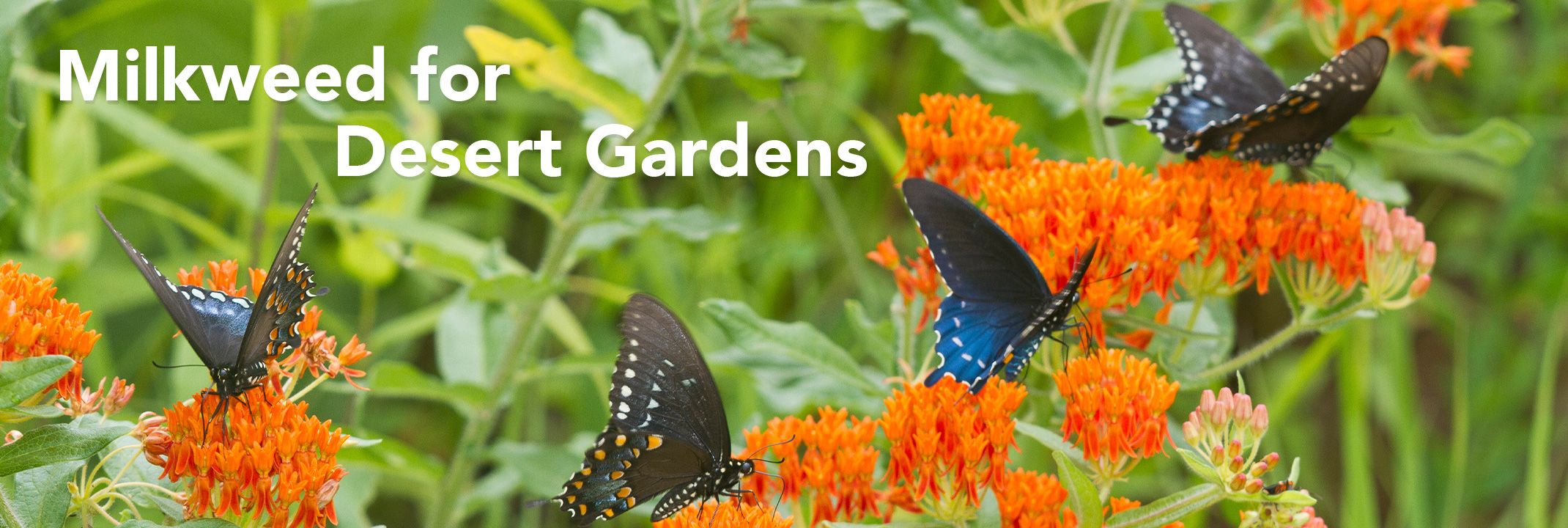
Nurturing Nature: A Local Guide to Growing Milkweeds in Arizona
Tips for Growing Milkweeds in Arizona
When it comes to growing milkweeds in Arizona, here are some important tips:
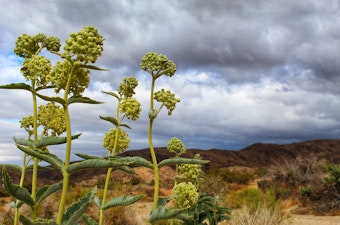 Local Milkweed Species: Arizona is home to around 30 species of milkweed, such as the Desert Milkweed (Asclepias erosa) and Horsetail Milkweed (Asclepias subverticillata). These native milkweeds are well-suited to the region's diverse habitats, including desert zones, riparian corridors, grasslands, and woodlands. It's essential to choose milkweed species that are adapted to the specific growing conditions in your area.
Local Milkweed Species: Arizona is home to around 30 species of milkweed, such as the Desert Milkweed (Asclepias erosa) and Horsetail Milkweed (Asclepias subverticillata). These native milkweeds are well-suited to the region's diverse habitats, including desert zones, riparian corridors, grasslands, and woodlands. It's essential to choose milkweed species that are adapted to the specific growing conditions in your area.- Tropical Milkweed Considerations: While Tropical Milkweed (Asclepias curassavica) is not native to Arizona, it can be found in nearby regions like southern Sonora and Baja California. If you decide to grow Tropical Milkweed, be cautious about the source of the plants. Avoid purchasing from big box stores or nurseries that heavily use pesticides. Look for organically and locally grown plants from reputable nurseries. Pruning the plants in late winter can help prevent issues with the protozoan parasite OE, although its impact is less severe in subtropical regions like Arizona.
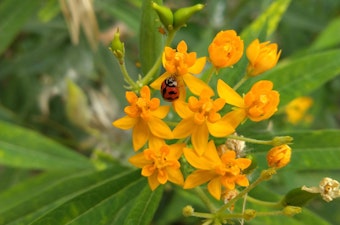 Beneficial Insects and Aphids: Milkweeds create a unique ecological niche by attracting various insects, including aphids. Aphids are commonly found on milkweed plants, but they also attract predator insects like ladybugs, green lacewings, and hoverflies that feed on these pests. This natural balance helps control other garden pests. While aphids may be present on milkweed, it's not a cause for concern unless they become overwhelming. Cutting back the plants when they show signs of aging or infestation can help rejuvenate their growth and maintain a healthier plant.
Beneficial Insects and Aphids: Milkweeds create a unique ecological niche by attracting various insects, including aphids. Aphids are commonly found on milkweed plants, but they also attract predator insects like ladybugs, green lacewings, and hoverflies that feed on these pests. This natural balance helps control other garden pests. While aphids may be present on milkweed, it's not a cause for concern unless they become overwhelming. Cutting back the plants when they show signs of aging or infestation can help rejuvenate their growth and maintain a healthier plant. - Supporting Monarchs and Pollinators: Milkweeds play a crucial role as both larval host plants and nectar sources for monarch butterflies, queen butterflies, and various other pollinators, including bees, butterflies, and hummingbirds. By growing milkweeds in your garden, you can provide vital habitat and food sources for these species. It's an opportunity to contribute to the conservation of monarchs and support the overall biodiversity in your area.
Milkweed Varieties for Your Desert Garden
1. Asclepias asperula (Antelope Horns): This native milkweed species is known for its unique, twisted seed pods resembling antelope horns. It has attractive clusters of white to pale pink flowers that provide nectar for pollinators. Antelope Horns is well-adapted to arid regions and can be a great addition to a pollinator-friendly garden in Arizona.
2. Asclepias angustifolia (Arizona Milkweed): This native species does great in the low desert areas with best success in filtered sun or morning-sun-only planting areas. A Monarch & Queen favorite. Easily reseeds itself in the surrounding area.
 3. Asclepias tuberosa (Butterfly Weed): This native milkweed species is highly attractive to pollinators, including butterflies, bees, and hummingbirds. It features vibrant orange or yellow flowers and serves as a valuable nectar source. Butterfly Weed is drought-tolerant and thrives in the arid conditions of Arizona.
3. Asclepias tuberosa (Butterfly Weed): This native milkweed species is highly attractive to pollinators, including butterflies, bees, and hummingbirds. It features vibrant orange or yellow flowers and serves as a valuable nectar source. Butterfly Weed is drought-tolerant and thrives in the arid conditions of Arizona.
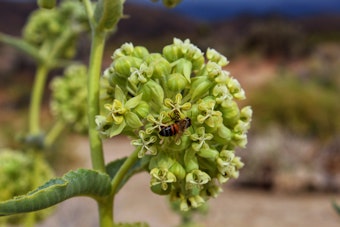 4. Asclepias erosa (Desert Milkweed): This native species is well-suited to the arid conditions of Arizona. It can be found in various habitats such as desert zones, riparian corridors, grasslands, oak woodlands, and pine forests. Desert Milkweed serves as a larval host plant for monarch and queen butterflies, as well as a nectar source for numerous insects, including bees, butterflies, and hummingbirds.
4. Asclepias erosa (Desert Milkweed): This native species is well-suited to the arid conditions of Arizona. It can be found in various habitats such as desert zones, riparian corridors, grasslands, oak woodlands, and pine forests. Desert Milkweed serves as a larval host plant for monarch and queen butterflies, as well as a nectar source for numerous insects, including bees, butterflies, and hummingbirds.
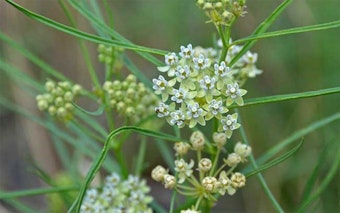 5. Asclepias subverticillata (Horsetail Milkweed): A native milkweed species in Arizona that thrives in different biotic communities within the region. This perennial plant has slender, vertical leaves and clusters of small white flowers. It provides valuable resources for monarchs, other butterflies, and pollinators.
5. Asclepias subverticillata (Horsetail Milkweed): A native milkweed species in Arizona that thrives in different biotic communities within the region. This perennial plant has slender, vertical leaves and clusters of small white flowers. It provides valuable resources for monarchs, other butterflies, and pollinators.
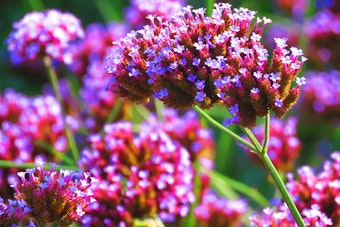 6. Asclepias fascicularis (Narrowleaf Milkweed): Another native milkweed species, Narrowleaf Milkweed, is well-adapted to Arizona's climate. It has slender leaves and produces clusters of pale pink or white flowers. This milkweed variety supports monarchs and various pollinators throughout their life cycles.
6. Asclepias fascicularis (Narrowleaf Milkweed): Another native milkweed species, Narrowleaf Milkweed, is well-adapted to Arizona's climate. It has slender leaves and produces clusters of pale pink or white flowers. This milkweed variety supports monarchs and various pollinators throughout their life cycles.
 7. Asclepias linaria (Pineneedle Milkweed): This native species has foliage that looks similar to a pine tree (hence its name). The white flowers bloom from spring – summer. Best planted in a morning sun or filtered sun location. Sometimes called the “Monarch Magnet” because of butterflies’ love for the plant.
7. Asclepias linaria (Pineneedle Milkweed): This native species has foliage that looks similar to a pine tree (hence its name). The white flowers bloom from spring – summer. Best planted in a morning sun or filtered sun location. Sometimes called the “Monarch Magnet” because of butterflies’ love for the plant.
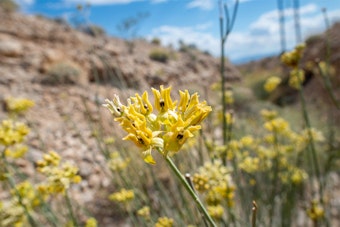 8. Asclepias subulata (Rush Milkweed): This native species is extremely tolerant of our intense summer heat and is highly drought tolerant. Reseeds easily even in poor soils. This species attracts Monarch and Queen butterflies, and is a favorite nectar source for the Tarantula Hawk wasp.
8. Asclepias subulata (Rush Milkweed): This native species is extremely tolerant of our intense summer heat and is highly drought tolerant. Reseeds easily even in poor soils. This species attracts Monarch and Queen butterflies, and is a favorite nectar source for the Tarantula Hawk wasp.
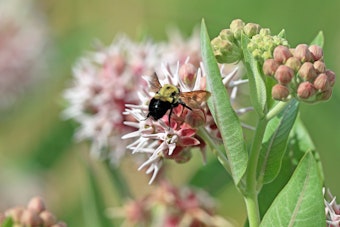 9. Asclepias speciosa (Showy Milkweed): A native milkweed species with large, showy pinkish-purple flowers that attract a wide range of pollinators, including butterflies and bees. This hardy milkweed variety can tolerate different soil types and is well-suited for Arizona gardens.
9. Asclepias speciosa (Showy Milkweed): A native milkweed species with large, showy pinkish-purple flowers that attract a wide range of pollinators, including butterflies and bees. This hardy milkweed variety can tolerate different soil types and is well-suited for Arizona gardens.
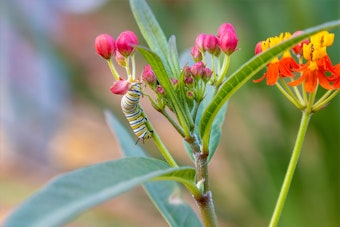 10. Asclepias curassavica (Tropical Milkweed): While this species is not native to Arizona, it can be found in southern Sonora and Baja California, relatively close to the region. Tropical Milkweed is an evergreen milkweed with vibrant orange and red flowers.
10. Asclepias curassavica (Tropical Milkweed): While this species is not native to Arizona, it can be found in southern Sonora and Baja California, relatively close to the region. Tropical Milkweed is an evergreen milkweed with vibrant orange and red flowers.
Note: It is important to exercise caution when purchasing this species, as plants from many nurseries may have been treated with pesticides. Additionally, Tropical Milkweed can carry the protozoan parasite OE, but in subtropical regions like Arizona, it is less problematic due to competition with other microbes. It is critical to avoid using pesticides, and to prune the plants in late winter to help prevent issues associated with OE.
By selecting and growing these milkweed species, you can provide valuable habitat and resources for monarch butterflies, queen butterflies, and other pollinators in Arizona. Choosing native milkweeds and practicing responsible, pesticide-free sourcing will contribute to the conservation of these plants and support the local ecosystem.

